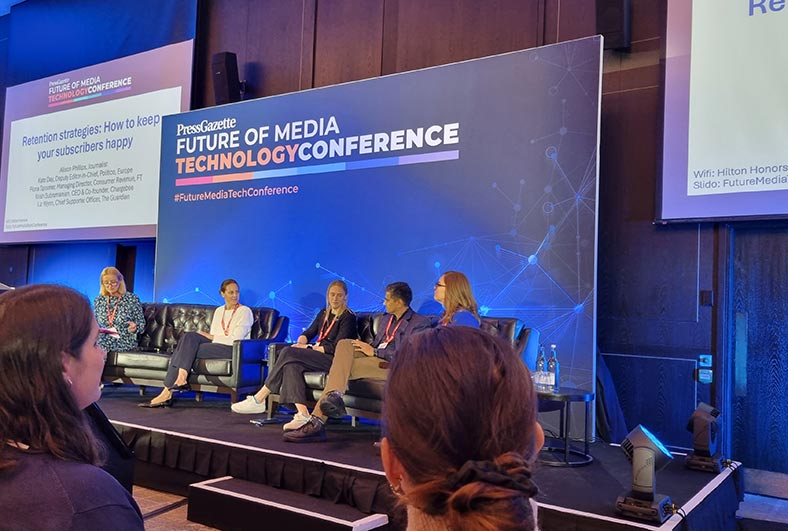Blog / Events / Journalists
How to gain, and retain, an audience in 2024

How do you keep a reader interested when there is such a plethora of news outlets and media to choose from?
At this year’s Press Gazette’s Future of Media Technology Conference, journalists from The Guardian, The Financial Times (FT), and Politico discussed how to keep subscribers happy and engaged. Here are the key points shared on retention strategies…

Knowing the value of your journalism
For media organisations that have a subscription model, it’s always more beneficial to retain the audience you have rather than try to acquire a new one. Fiona Spooner, managing director of consumer revenue at the FT, said ‘we know, for us, that 1% of retention is equivalent to 15% in acquisition.’ But what do companies need to be doing to retain that audience?
Kate Day, deputy editor-in-chief of Politico, believes that it’s the value journalism provides that makes the audience stick around:
‘The fantastic thing about having a subscription model is there’s much more focus on the value for your users. In our case, it’s because it helps them do their jobs better, the professional need for information. We have to have the newsroom focused all the time on the journalism that’s really going to make a difference.’
For Liz Wynn, chief supporter officer at The Guardian, the value for the reader and why they want to subscribe is slightly different:
‘What we found was those readers who wanted to buy into our subscriptions and our membership products were united by this overriding motivation around supporting journalism. Ensuring the ongoing sustainability of The Guardian – that emotional connection goes so far upstream that it is very strong.’
To discount or not to discount?
If retention is an issue, then offering discounts to keep subscribers or possibly acquire new ones could seem like a logical step. However, Fiona and the FT don’t really see the benefit. ‘We have certainly found that deep discounting isn’t the right thing for sustainable long term growth. It’s very tempting because you see the results straight away, but we don’t lead with discount offers because we don’t see customers staying. We know that retention for people who come in on a full price subscription is double that which come in on a discount.’
Krish Subramanian, CEO and co-founder of Chargebee, believes that ‘where there is heavy discounting going on, then it’s acquisition without realisation that you will pay a huge price when it comes to retention later.’ This could also risk longer term subscribers. Liz pointed out that there is ‘unfairness and trust problems with discounting as your most loyal readers are basically being stiffed for a higher price than new acquisitions.’
Micro payments and personalisation is the way forward
Publishers that don’t want to consider discounting their high value products and subscriptions may want to look at micro payments as another option. At the FT, Fiona explained how the brand has ‘a cohort of customers who pay a pound to read an article, and we never see them again, and I think that’s okay.’ Liz at The Guardian said that one-off contributions from their readers is the ultimate micro payment. Krish felt that this idea could be pushed further:
‘If somebody is willing to pay a pound for an article, what else are they actually interested in? Can we actually make this into a ten pound purchase for a bundle of other products that might be articles from the same author, giving them access to their archive?’
Another consideration to help with retention is personalisation. Kate said that subscribers at Politco often talk about information overload and therefore being able to customise and personalise choices can be beneficial. ‘Everybody can customise the product to some degree. We’re starting to experiment with things like AI summaries to help filter the information you get,’ Kate explained. It’s also been a tactic for Fiona at the FT:
‘There’s clearly a value for data driven personalisation that makes people’s lives easy. We know that people who have set up more personalised accounts are less likely to cancel because they’ve invested that time and effort into their newsletters, their topics to follow, and their journals.’
Catch up with all the key talking points from the Future of Media Technology Conference with our round-up. Plus if you’re looking to retain your audience by writing an article with some expert commentary or an interesting case study, then you can get that via the Journalist Enquiry Service.